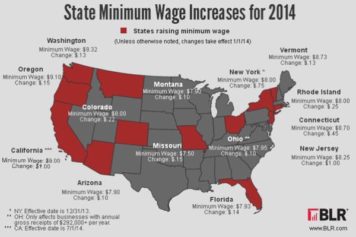With the start of the new year, ten states across the country—none of them in the South—have raised their minimum wage, thus increasing the gap that exists between states stuck at the federal minimum of $7.25 and the 19 states that have decided to exceed the federal minimum.
The 10 states that have raised their minimum from between 10 and 35 cents an hour are Arizona, Colorado, Florida, Missouri, Montana, Ohio, Oregon, Rhode Island, Vermont and Washington. The modest raise will affect the incomes of nearly a million low-income workers, putting an additional $190 to $510 per year into the pocket of the average minimum-wage worker.
Most of the hikes were done automatically in states that have laws requiring raises to keep pace with inflation, though Rhode Island’s hike came as a result of Gov. Lincoln Chafee signing a new law hiking the minimum wage.
“For a low-wage worker, these increases are a vital protection against rising costs. In states without indexing, inflation slowly erodes the value of minimum wage workers’ pay,” said David Cooper, an analyst with the nonpartisan Economic Policy Institute.
Among the nine states with the automatic adjustments, the average minimum wage is $8.12 per hour, up from just under $8. States that do not have the automatic raise have an average minimum wage of about $7.40—a difference of about $1,500 per year for a full-time worker, which is a rather large difference when you consider the annual income for these workers is around $15,000.


